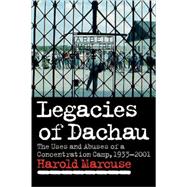
What is included with this book?
| Dachau: past, present, future | |
| Dachau 1890-1945: A Town, A Camp, A Symbol of Genocide | |
| Dachau: a town and a camp | |
| Dachau: a symbol of genocide | |
| Dachau 1945-1955: Three Myths and Three Inversions | |
| 'Good' Nazis | |
| 'Bad' inmates | |
| 'Clean' camps | |
| Dachau 1955-1970: Groups and Their Memories | |
| The first representations of Dachau, 1945-1952 | |
| Rising public interest, 1955-1965 | |
| Catholics celebrate at Dachau | |
| The survivors negotiate a memorial site | |
| Jews represent the Holocaust at Dachau | |
| Protestants make amends at Dachau | |
| The 1968 generation: new legacies of old myths | |
| Dachau 1970-2000: New Age Cohorts Challenge Mythic Legacies | |
| Redefining the three myths and ending ignorance: the 1970s | |
| The 1980s: relinquishing victimisation | |
| The 1990s: resistance vs. education | |
| Table of Contents provided by Publisher. All Rights Reserved. |
The New copy of this book will include any supplemental materials advertised. Please check the title of the book to determine if it should include any access cards, study guides, lab manuals, CDs, etc.
The Used, Rental and eBook copies of this book are not guaranteed to include any supplemental materials. Typically, only the book itself is included. This is true even if the title states it includes any access cards, study guides, lab manuals, CDs, etc.